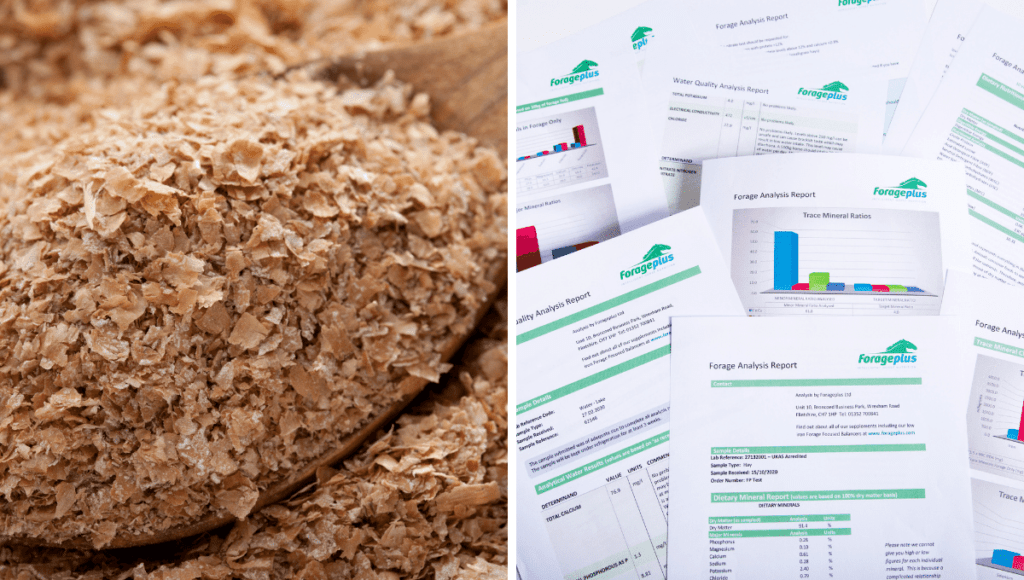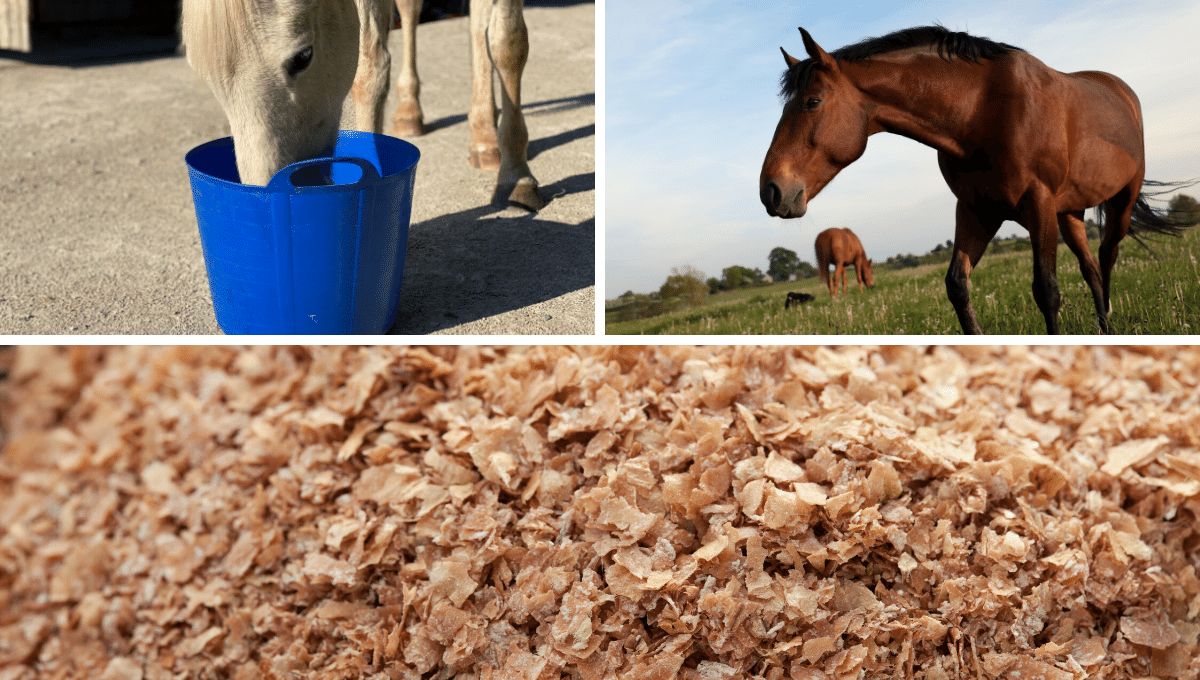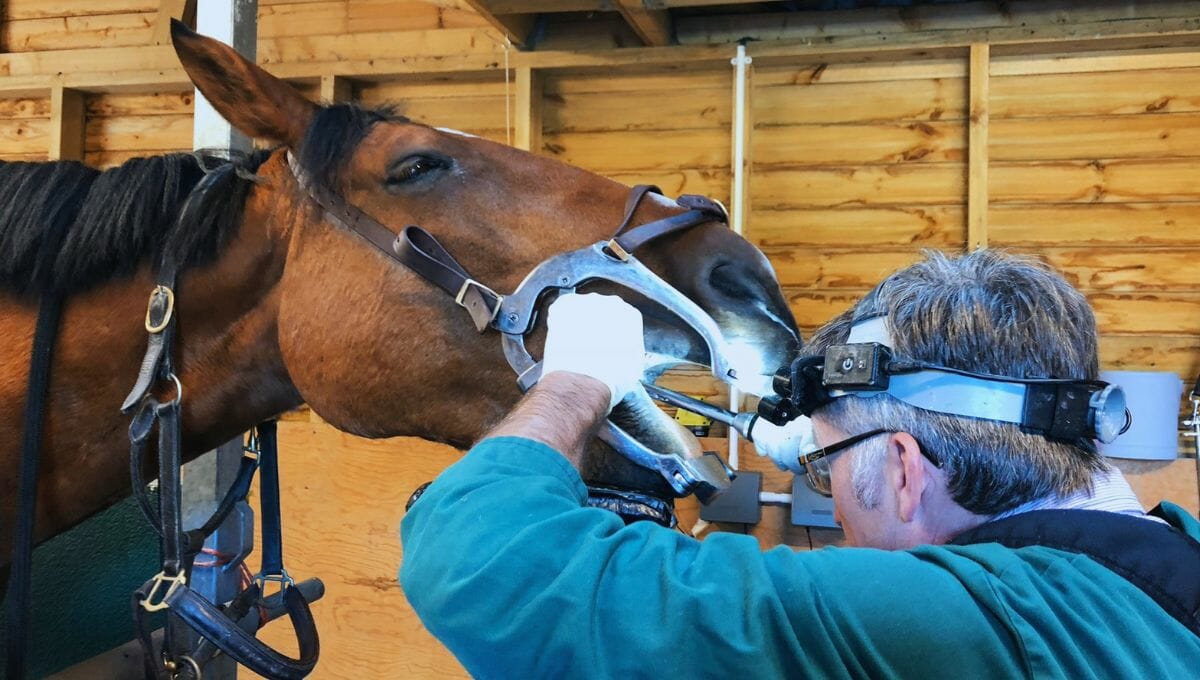Many owners we talk to are scared of feeding wheat bran. Horse wheat bran has gone from a widely used horse food to one which has had the ‘undesirable’ and ‘old-fashioned’ label attached to it.
Widely criticised for being a by product and being ‘imbalanced’ we feel the claims that it should not be fed are misleading and unhelpful because it supplies valuable horse phosphorous where phosphorous has been identified through forage analysis as being short in horse diets.
What is Wheat Bran?
Wheat bran is the hard outer layers of the wheat grain. It is very rich in essential fatty acids and contains significant quantities of starch, protein, vitamins, dietary minerals. When the bran is removed from the grain a large proportion of the nutritional value is lost with the bran so that makes this feed a highly useful and nutritious feed for horses.
When should Wheat Bran not be used?
Due to a high starch content 13-18% wheat bran is not suitable to be fed to horses and ponies prone to laminitis. Forageplus recommends that the ESC sugar and starch levels in the diet of an EMS, insulin resistant horse or pony should be kept to a combined level of under 10%.

Wheat Bran can be used to Balance Calcium
Depending upon the amount of calcium present in your horse’s diet then bran might indeed be a very useful feed to feed to your horse for the phosphorous it contains. Bran’s high phosphorous content is often mentioned as a draw back but if the grass, hay or haylage a horse is eating is very high in calcium or you are feeding your horse an alfalfa heavy diet then you might need that valuable phosphorous.
The average analysis of UK grass, hay and haylage shows that usually calcium is high and very imbalanced in terms of it’s ratio with phosphorous. Adult horses in maintenance to light work should be exposed to a ratio with calcium which is around 2:1.
Often with the modern trend towards feeding beet pulp and alfalfa (both high in calcium) scientific analysis of the total diet, with the forage eaten, shows a massive shortage of phosphorous with ratios of calcium to phosphorous sometimes above 6:1. In this case feeding wheat bran is a very useful way of balancing the total diet when you look at the overall profile with forage.
Wheat Bran is very Palatable
The mineral phosphorous supplements are not very palatable. This leads to a problem in being able to supplement quantities high enough to balance many of the forage profiles common in the UK and Europe. Using wheat bran as a feed source of phosphorous is really useful because not only is it high in phosphorous but horses love both its taste and smell.
Wheat Bran for Young, Breeding or Hard Working Horses
Far from imbalancing things then the fact that bran is high in phosphorous actually makes it a very useful feed for controlling high calcium intakes particularly where a horse is hard working, young, pregnant or lactating. Very careful attention should be paid to the ratios between calcium and phosphorous and all minerals for these categories of horse. The ratio for young horses needs to be around 1.7:1 the ratio for a hard working horse 1.2:1! So yet again another reason why small amounts of it might be very useful in the diet.
How to Balance Wheat Bran in a Horses Diet
Wheat bran contains an average of 2.4 grams of phosphorous per 220 kg of weight fed (min. 1.71 grams max. 3.5 grams per 220 kg) so if you don’t have high calcium in the forage you feed or you don’t know what the calcium level in your horse’s diet is then just feeding a high calcium feed like alfalfa will balance the wheat bran easily. Just feeding an equal amount of alfalfa to wheat bran will result in the wheat bran being balanced. Of course if you know that the calcium levels in your horse’s diet are too high you can omit the alfalfa and use just wheat bran to balance the total diet. This is intelligent targeted nutrition and will probably save you money too! The best way to find out what the calcium levels in your grass, hay or haylage are is to carry out forage analysis.
Here at Forageplus we see the high phosphorous content of bran as a major benefit but that of course is because we understand the mineral content of grass, hay and haylage through the hundreds and hundreds of forage analysis we carry out. Used in a targeted fashion to control and balance high calcium levels wheat bran takes on a whole new importance.

Wheat Bran is High in Protein
Wheat bran averages over 17% protein so if you need to boost protein in the diet again in can be a useful addition. It has good levels of both lysine and methionine both essential amino acids which are usually short in the horses daily ration. Many UK horses are lacking in adequate protein with hays and haylage commonly reporting as around only under 6% protein. Where a horse is short of protein using high protein feeds such as alfalfa, beet pulp and bran can introduce a useful boost to protein in the diet and of course you now know how to balance the wheat bran!
Wheat Bran is High in Calories
The calorie level of wheat bran is equal to oats but where oats have a starch level of around 40% wheat bran comes in at less than half that. For a starch sensitive horse in hard work or a horse needing to gain weight then using a proportion of bran can be a useful strategy.
Wheat Bran Benefits
Wheat Bran is a Good Source of other Minerals and B Vitamins. As well as being a great source of phosphorous bran also has good levels of magnesium, copper and zinc, when compared to hay/haylage or cereals, and high levels of B vitamins.
Phytates are often said to be a problem in wheat bran because they can block calcium but at the amounts commonly fed (up to 700 grams per day) this is not going to represent a significant problem and of course you can balance it just by feeding a high calcium feed such as alfalfa.
The fibre in wheat bran is lower than in hay or haylage but often the lignin content of bran is much lower than that found in hay or haylage. With a rich supply of fiber bound antioxidants which are released during fermentation in the cecum and colon, wheat bran can contribute to disease protection in those areas of the gastrointestinal tract.
Another benefit is bran’s palatability. Horses just love the taste and smell of wheat bran and where you have a fussy horse which won’t eat supplements then it makes an excellent carrier. It also comes into its own where a horse with poor teeth, due to age, needs a mash because it can no longer chew.
A mash of 50:50 wheat bran and alfalfa or 25:75 bran and beet pulp has a calorie content roughly equivalent to the same weight of plain oats but only 1/4 to 1/2 as much starch. The appealing aroma and taste of bran make it an excellent carrier for supplements.
Dr. Eleanor Kellon VMD.
Forageplus Top Tip
So far from ‘just’ being a by product bran turns out to be a high nutritional choice as long as it is used in a targeted intelligent way. Our top tip is that although wheat bran may be old-fashioned for those in the know, used in conjunction with a forage analysis and properly balanced to that forage, it can be a very valuable addition to the diets of many horses.





